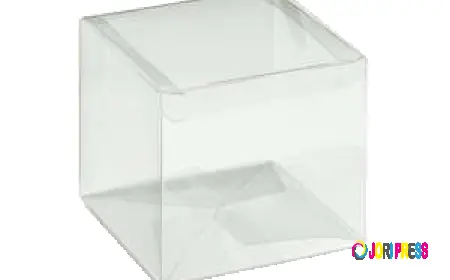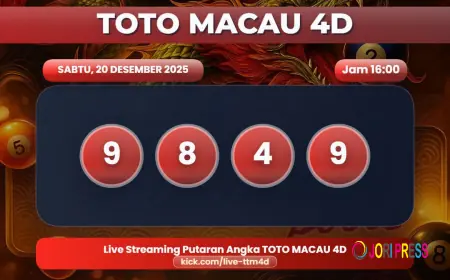24-Gauge Shotguns in Competition: Is It a Viable Choice for Skeet or Sporting Clays?

The resurgence of interest in alternative shotgun gauges has brought the 24 gauge shotgun back into conversations among clay-target shooters. Once a popular choice in upland game hunting, the 24 gauge sits between the ubiquitous 20 gauge and the lighter 28 gauge in bore size and ballistics. For those curious whether it can hang with the long-established competition standards—especially in skeet and sporting clays—the answer depends on several factors: cartridge availability, shot patterns, shooter preference, recoil management, and the specific demands of the discipline. This article explores how the 24 gauge performs in competition settings and whether it’s a practical, competitive option for serious shooters, and if you want to research available guns, parts, or listings we recommend our site GunsAmerica.
A brief primer on the 24 gauge
The 24 gauge shotgun occupies an intermediate position in gauge nomenclature: its bore diameter yields performance characteristics between 20 and 28 gauge. Historically, the 24 gauge was manufactured in both field and target loadings, used for small-game hunting and some niche shooting. While factory support waned through the late 20th century, pockets of enthusiasm and custom loads have kept the gauge alive.
From a ballistics perspective, the 24 gauge typically fires payloads that are slightly lighter than 20 gauge loads but heavier than many 28 gauge offerings. That mix can produce pleasant recoil, competent shot strings at typical clay-target distances, and a balance of pattern density and manageable mount dynamics. But the practical reality of venturing into competitive skeet or sporting clays with a 24 gauge stands on more than pure ballistics.
Skeet: consistency, swing, and the advantage of predictability
Skeet shooting is a discipline demanding consistent mounts, quick shoulder-to-shoulder transitions, and reliable patterns for targets crossing at known points. Classic skeet distances are relatively short; targets are launched from fixed houses along a semi-circular field. These predictable target presentations reward guns and loads that deliver tight, even patterns and consistent felt recoil.
A 24 gauge shotgun can perform well in skeet for several reasons. First, the reduced recoil compared to many 12-gauge options encourages faster follow-up shots and less flinch for shooters sensitive to heavy recoil. Second, pattern density from a 24 gauge at skeet ranges (often 21 yards and closer) is usually sufficient to break targets consistently—provided the load and choke are matched appropriately.
However, the challenge for skeet competitors is availability and standardization. Most competitive shooters and coaches are accustomed to using 12 or 20 gauge loads with widely available factory ammunition tuned for sporting contests. With a 24 gauge, shooters may need to search for compatible target loads or work with a gunsmith or reloader to find the ideal shot size and velocity to produce reliable patterns through their chokes. For the shooter willing to experiment and optimize loads, the 24 gauge can be a steady performer in skeet—especially for juniors, seniors, or female competitors seeking lower recoil without sacrificing pattern density.
Sporting clays: variety, distance, and adaptability
Sporting clays is often described as “golf with a shotgun” because of the course-style variety: different target types, angles, and distances test a shooter’s versatility. Targets can run anywhere from a few yards to well beyond 40 yards, and shooters may face low-angled incoming targets, rabbits, teal presentations, doves, and more. This diversity places greater demands on the shotgun and the chosen load.
In sporting clays, the 24 gauge’s viability becomes more situational. For short to moderate-range targets and many mid-course presentations, a well-tuned 24 gauge with proper shot size and velocity can be highly effective. The lighter recoil and typically quicker swing make it comfortable for long strings of targets and help maintain concentration throughout a round.
Nevertheless, extreme distance or heavy, wind-affected targets may challenge a 24 gauge. At longer ranges, pellet energy drops faster, and the smaller payload compared to a 12 gauge—or even a fully-loaded 20 gauge—can mean fewer pellet strikes on the clay. In such situations, a competitor may find themselves needing to lead more, break targets with more precision, or choose loads optimized for density rather than sheer pellet count.
Thus, the 24 gauge is a practical, enjoyable option for sporting clays stations emphasizing speed, presentation variety, and nearer-range targets. For courses with many long-distance or heavily angled shots, shooters should evaluate whether their load and choke setup can reliably deliver the necessary pattern coverage.
Patterning: choosing the right choke and shot
Pattern testing is essential for any shooter considering the 24 gauge for competition. Choke selection and shot size will determine how pellets distribute at various ranges. Because the 24 gauge has slightly different internal dimensions than other gauges, chokes may behave a touch differently; some shooters report that traditional choke tables translate well, while others recommend a bit of hands-on testing to confirm.
Shot size also matters. Smaller shot (e.g., 7½, 8) produces denser patterns favorable for fast presentations at close range, while larger shot (e.g., 6, 5) helps maintain energy and penetration at distance. For skeet, denser patterns with smaller shot often perform best, while sporting clays may require a mix depending on the station. If factory loads in 24 gauge are scarce, reloading becomes an attractive option, allowing shooters to tailor pellet counts and velocities to their shooting style.
Recoil and comfort: a performance multiplier
One of the 24 gauge’s most frequently touted advantages is reduced recoil. Lower felt recoil can markedly improve a shooter’s consistency. Flinch and anticipation decrease, sight picture recovery is faster, and shooters can maintain better rhythm through long strings—which is especially valuable in competitive settings.
Reduced recoil is not just about comfort: it’s a measurable performance advantage for many competitors. For example, a shooter moving from a hard-kicking 12 gauge to a 24 gauge may find they’re breaking more targets simply because they’re less likely to develop a flinch or collapse their mount after the shot. For younger shooters, seasoned competitors trying to extend shooting careers, or anyone who shoots multiple rounds in a day, the ergonomic benefits can justify choosing a 24 gauge.
Ammunition availability and cost
Where the 24 gauge can stumble is ammunition availability. Factory-produced 24 gauge target loads are not as common as 12, 20, or 28 gauge options. That limits off-the-shelf choices for competitors who prefer to buy ready-made target loads. The scarcity can also make ammunition pricier, and finding consistent lots for competition may be harder.
Reloading provides a practical workaround. Competitors who reload can produce consistent 24 gauge target loads tailored to their choke and discipline. This solution requires time, equipment, and knowledge—but it’s a path many serious shooters take when working with non-standard gauges. Some manufacturers have reintroduced limited runs of 24 gauge loads in recent years; staying connected with niche suppliers and shooting communities can help locate these offerings.
Gun availability and fitment
Another practical consideration is firearm availability. Many modern manufacturers produce 12 and 20 gauge competition shotguns in abundance, with a wide variety of models, grades, and custom options aimed squarely at skeet and sporting clays. Finding a new production 24 gauge shotgun from a major manufacturer may be more challenging, though custom builders and boutique makers sometimes offer 24 gauge versions of popular models.
Stock fit and balance remain key. The 24 gauge’s lighter ammunition allows gunsmiths and manufacturers to optimize weight and balance for quicker swings and smoother mounts. Whether using a vintage 24 gauge or a custom-made competition gun, fit—length of pull, drop, and comb alignment—will often matter more than gauge alone for success in competition.
Rules and class considerations
Competitive rules generally revolve around gauge limitations for specific classes. In many competitions, shooters are free to use various gauges in open classes; in others, gauge-specific restrictions or handicap systems might change the competitiveness of a particular gauge. Before committing to a 24 gauge shotgun, check local and national rules for skeet and sporting clays events to ensure your choice fits within class restrictions or handicap allowances.
Who should consider a 24 gauge?
The 24 gauge shotgun is particularly appealing for several shooter profiles:
-
Recoil-sensitive competitors who want a performance edge without the heavy push of a 12 gauge.
-
Shooters who favor quick mounts and fast follow-ups, such as those who compete in fast-presentation sporting clays.
-
Upland hunters and shooting competitors who appreciate a balance between payload and handling.
-
Reloaders and custom-gun buyers who are comfortable tailoring loads and gun specs to a less common gauge.
Conversely, shooters who primarily tackle long-range pigeon or dove presentations in sporting clays, or those who don’t want to invest in custom loads or guns, may find a 20 or 12 gauge more practical due to availability and proven versatility.
Training with a 24 gauge: tips for competitive success
-
Pattern test frequently. Know how your chosen choke and shot size behave at target ranges typical for your discipline.
-
Work on fundamentals. Reduced recoil helps, but consistent mount, sighting, and follow-through remain crucial.
-
Consider reloading. Tailoring loads gives you control over pattern density and recoil impulse.
-
Fit is king. Ensure stock dimensions match your body and shooting style for repeatable results.
-
Practice course-specific scenarios. Train on both close, fast shots for skeet stations and longer, varied presentations for sporting clays.
Final verdict: viable, with caveats
A 24 gauge shotgun can be a viable and competitive choice for both skeet and sporting clays—particularly for shooters who value lower recoil, quick handling, and the enjoyment of a responsive gun. It shines at close to moderate ranges and in courses that reward speed and precision. The primary hurdles are ammunition and firearm availability; these are surmountable for those willing to reload, buy from specialty producers, or commission custom guns.
If you’re considering a 24 gauge shotgun for competition, approach it as you would any serious equipment choice: test patterning, confirm rules, optimize fit, and be ready to invest a bit of time in sourcing or producing the right loads. For many shooters, the trade-offs are worth it—an enjoyable, accurate, and comfortable option that can hold its own on the clays field. If you’re ready to explore options, connect with reputable builders, shooting clubs, and suppliers who can help you locate a suitable model or assist with reloading so you can confidently buy guns and gear that match your competitive goals.
What's Your Reaction?
 Like
0
Like
0
 Dislike
0
Dislike
0
 Love
0
Love
0
 Funny
0
Funny
0
 Angry
0
Angry
0
 Sad
0
Sad
0
 Wow
0
Wow
0
















































